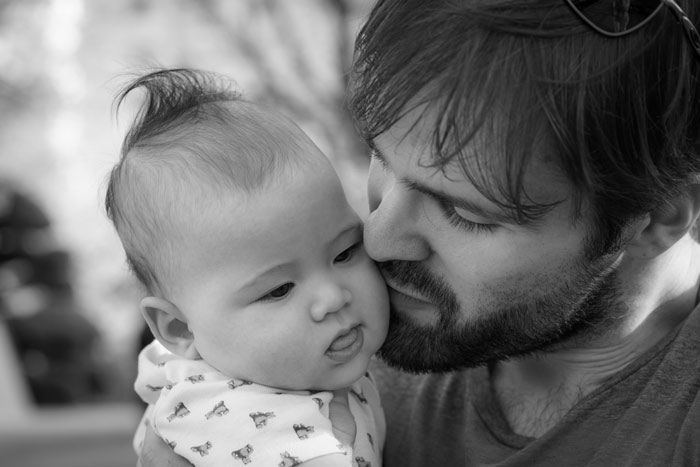What Causes Non-Food Allergy in Newborns?
You might have been looking for the cause of your baby’s rough cheeks or reddened buttocks, excluding all the products in turn from the menu, and then you finally ask the question that maybe it is not food that causes allergies in your infant? And then what? How can you determine the cause of the ailment and – most importantly – how can you help your baby?

Allergies in infants and babies
Very often – and contrary to a popular opinion – the “culprit” of an allergic reaction in a baby or an infant is not the food.
These may be certain aggressive substances, which the baby inhales or which it is forced to come in contact with.
Non-food allergy in children: where does it come from?
Indeed, allergies in children (especially in newborns and infants) are not caused by “harmful” products that the baby or its breastfeeding mother get acquainted with. Quite the opposite, these are allergens of the non-food nature. For example, a severe allergic reaction (especially on the skin) may be caused by:
- Dust and dust mites.
- Secretions of domestic pets (not just furry and fluffy ones). Non-food allergies in infants and babies may be caused by turtles, lizards, and other hairless pets.
- Cosmetics and perfumes for babies and adult family members.
- Pollen of potted plants and cut flowers.
- Household chemicals (especially detergent products).
What causes allergies in infants and babies?
The most common cause of non-food allergies in infants is a genetic predisposition to the formation of specific immune cells and proteins in the body, as well as regular contacts with allergens. If one or more baby’s relatives has allergic reactions (or had them in childhood), it is likely that the same allergens will “attack” the baby.
Furthermore, temporary immaturity of the skin in babies under one year may play a negative role. It is often caused by the insufficient production of ceramides and filaggrin, a specific protein, which is responsible for skin hydration. The baby’s skin is too vulnerable to the effects of various substances from the outside.
How to find out what exactly causes an allergic reaction in a newborn or baby?
In addition to analyzing immunoglobulins of type E, which can be inaccurate in case of infants, it is necessary to undergo the so-called skin tests. Children are tested for allergens as follows: a small amount of an allergen (a substance that seems “suspicious” to parents or doctors) is placed on the baby’s skin and observed for 48 hours whether there will be a reaction or not.
After a while, if no severe reactions follow, the baby’s skin is scratched a little on the site of applying the supposed allergen. If there are no visible reactions during the next 24 hours, (rash on the child’s body, irritation, redness, peeling skin, and so on), a minus sign is indicated next to the name of the allergen on the sheet with the results. Next, other “suspected” allergens are tested. Alas, there is no other way to find out the “culprit” of non-food allergies in the baby.
Treatment of non-food allergies in infants and babies
After a series of skin tests you will get a complete list of substances that should be avoided. Make sure that the baby does not come in contact with them – it is already a part of the treatment of allergies. After all, the best way to avoid allergic reactions in a small child is to eliminate all contact with the allergen.
In addition, parents of an allergic baby need to fill their medicine chest with special emollient medications that will help them fight against atopic dermatitis. It occurs very often in infants in case of non-food allergies.
- The child will need special hygienic care.
- Daily bathing in cool water, not higher than 32°C.
- Baby gels and shampoos should be neutral (PH 5,5).
- To wipe the skin after bathing, use a soft cloth such as a flannel diaper. Wipe the skin of the newborn instead of rubbing it.
- A soothing cream (an emollient product) is always applied on the baby’s skin when it is still damp.
Allergy in infants and newborn babies
A healthy baby can be bathed every day if the parents prefer doing so, but a baby with manifestations of allergy on the skin should be bathed every day without exceptions.
An attack of non-food allergies in babies: how to remove severe irritation of the skin?
To quickly relieve your baby’s skin from itching, rashes and severe irritation, doctors recommend using ointments containing corticosteroids, which are designed to instantly reduce inflammation and normalize the baby’s skin, ridding it of Staphylococcus aureus. However, you cannot prescribe these drugs on your own, relying only on parental understanding. Medicines of this type (hormones) should be prescribed by a doctor!
There is a great possibility that with age (when the baby turns 2-3 years old) bouts of non-food allergies will remain only an unpleasant memory – the skin matures with age, metabolism is getting better, and the immune system is also improved.
However, it may happen that non-food allergies in a newborn or a baby up to one year old can manifest themselves in the form of atopic dermatitis and rashes on the skin, eventually leading this child to another form of allergy such as asthma. To eliminate such turns in the baby’s medical history, parents should contact an allergist, who could occasionally watch the baby as he/she gets older and run the necessary tests.
